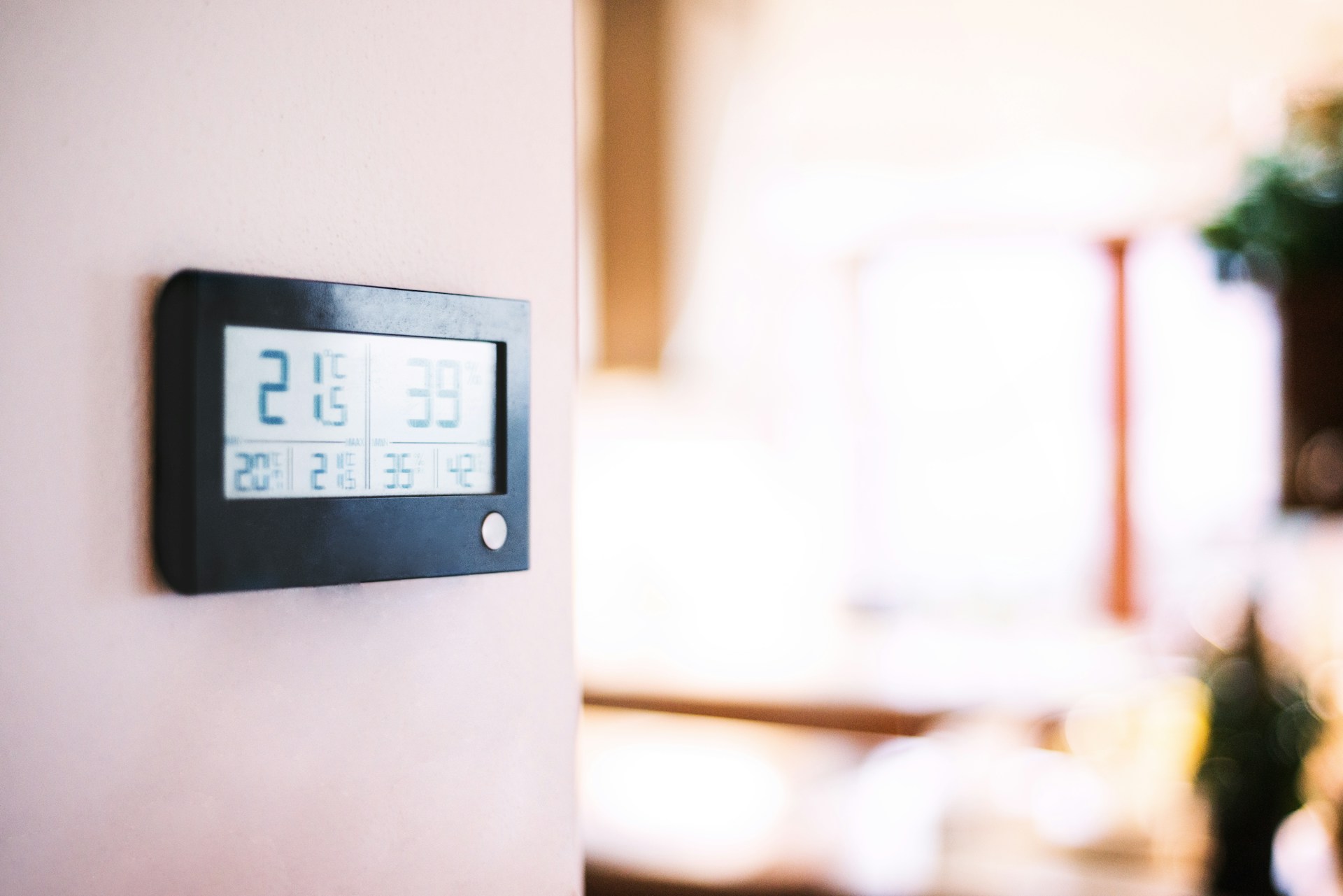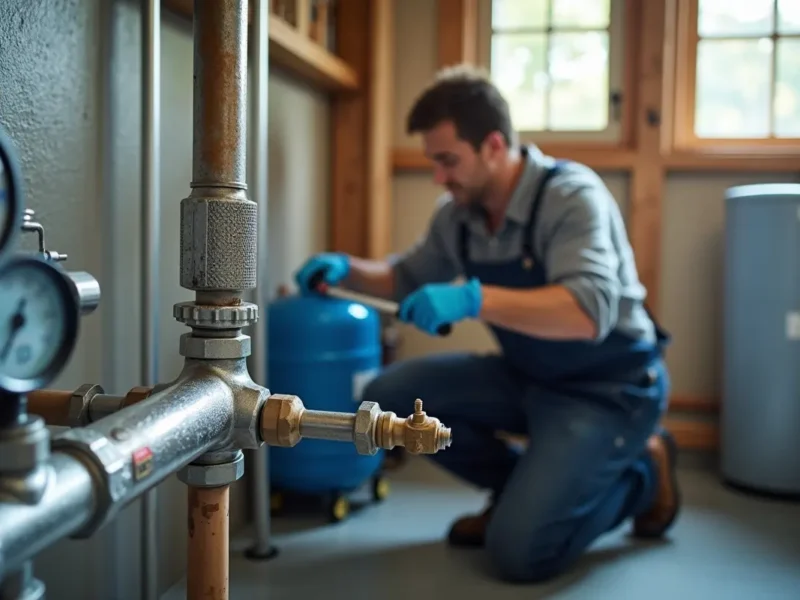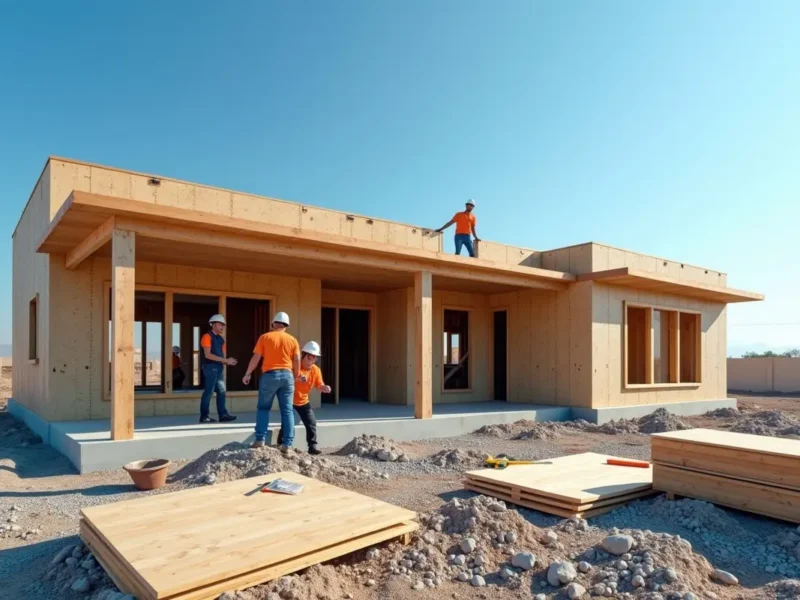If the house feels freezing but the thermostat says everything’s fine, something’s definitely off. A working thermostat is supposed to control the temperature by telling your heating system when to turn on or off. So when the thermostat isn’t doing its job, it doesn’t just make things uncomfortable—it could mean there’s a bigger issue happening behind the scenes.
This kind of problem can be super frustrating. The temperature on the screen might look normal, but your toes say otherwise. Let’s break down what could be going wrong and what steps can help get the heat flowing again.
First, Let’s Talk About What the Thermostat Actually Does
The thermostat is like the brain of your heating and cooling system. It reads the temperature of the air and decides when to tell the furnace or air conditioner to start or stop. If the house drops below the temperature you set, the thermostat should send a signal to the heater to kick on. Once the room warms up enough, it tells the heater to shut off.
So if the house is cold and the heat isn’t coming on, that signal might not be getting through—or the thermostat might be confused about what’s actually happening around it.
Check the Obvious First—It Might Be Simpler Than You Think
Before calling anyone or assuming the worst, it’s worth looking at a few basic things. Make sure the thermostat is actually powered on. Some models run on batteries, and if those are low or dead, it might not be sending any signals at all. A blank or frozen display usually means it’s lost power.
Also, double-check the settings. It’s easy for someone to switch it to the wrong mode without noticing—especially if it’s a touchscreen model. If it’s set to “cool” or “off” instead of “heat,” the furnace won’t turn on no matter how low the temperature gets.
Another thing to look at is the temperature setting itself. If someone in the house turned it down without saying anything, the system might not even try to heat the room because it thinks it’s doing its job already.
The Thermostat Might Be in a Bad Spot
This is something a lot of people don’t think about. If the thermostat is placed near a heat source, like a sunny window or an appliance that gives off warmth, it might think the room is hotter than it really is. That means it won’t call for heat even though the rest of the house is chilly.
Similarly, if it’s near a draft or exterior door, it might be reading the cold air coming in and constantly signaling the heater to run—making things uneven and confusing.
Thermostat placement matters more than most people realize. When it’s not in a spot that reflects the average room temperature, it can throw everything off.
Electrical Problems and Broken Wires
Sometimes the thermostat is fine, but the connection between it and the HVAC system is broken. The wires that send signals from the thermostat to the furnace can get damaged or come loose, especially in older homes or if there’s been recent renovation work.
If there’s a wiring issue, the system can’t get the message to start heating—even if the thermostat is working perfectly. This isn’t something most people can see just by looking. In these cases, it’s best to call in a professional to safely check the wiring.
When the system won’t respond at all—no clicks, no fan, no heat—it could mean there’s a wiring issue, or possibly a blown fuse in the HVAC control board.
This is the kind of issue that’s often discovered during a professional inspection, so having a reliable service is important. Platinum Air Heating & Cooling offers expert help for situations like this, especially if you’re in Tucson and need fast, local support. They’re known for figuring out these kinds of problems quickly without a bunch of guesswork.
Could the HVAC System Itself Be the Problem?
If everything with the thermostat checks out—power, settings, placement—it might not be the thermostat at all. The heating system could be the one struggling.
A dirty air filter can block airflow, which means warm air can’t move through the vents like it should. The furnace might still be working, but the heat isn’t getting to the rooms. Changing the filter is usually easy and should be done every month or two, depending on how dusty the home gets.
The furnace could also be overheating and shutting off early. When that happens, it might start up for a few minutes, then stop before it warms the house. That could be due to blocked vents, dirty components, or other mechanical issues. These are signs that something deeper is wrong and needs fixing before it gets worse.
Don’t Ignore the Signs—They’ll Cost More Later
Even if the house warms up eventually, any time the thermostat seems off, it’s worth paying attention. Thermostats don’t usually fail all at once. They can start acting strange for weeks or even months before totally giving out.
One sign is that the system cycles on and off way too often. That’s called short-cycling, and it’s hard on the equipment. It wastes energy, wears out parts, and makes the house feel uneven. Another sign is when the temperature doesn’t match what the screen says. If it feels 60°F but says 70°F, that’s a clear signal something’s wrong.
Delaying repairs can lead to bigger problems down the road—especially when dealing with the electrical parts or internal furnace components. And during colder months, being stuck without heat can be more than uncomfortable—it can be dangerous.
Smart Thermostats Are Cool, But Not Perfect
Lots of people are switching to smart thermostats because they’re easy to control from a phone. But even these can have issues. If the Wi-Fi goes down or there’s a software glitch, they can stop working like regular thermostats would. Sometimes updates make the system buggy, and settings can get wiped without warning.
Smart thermostats also depend on being installed correctly. If they’re not connected to the right wires or settings, they might send the wrong signals or not talk to the system at all.
So if the heating seems weird after getting a smart thermostat, the problem might be the new device—not the HVAC system.
What You Can Do—and When to Get Help
There’s no need to panic if the house feels cold and the thermostat seems off. Start with the easy stuff: check the power, make sure it’s on the right setting, and look at the temperature setting. Replace the batteries if it uses them. Then check that the vents are open, and that nothing is blocking airflow in the room.
But if all those steps don’t help, it’s time to call in a professional. Especially if the furnace isn’t responding, the wires are damaged, or the system keeps shutting off for no reason. A skilled HVAC tech can quickly figure out if the thermostat needs replacing, if there’s a wiring problem, or if the heating system needs repairs.
Final Thoughts
When the house is cold but the thermostat acts like everything’s fine, something’s not working the way it should. Whether it’s the thermostat itself, the wiring, or the heating system, figuring it out early can prevent bigger problems. Thermostats play a huge role in how comfortable a home feels—and keeping them in good shape helps the entire HVAC system run better.
If anything seems off, it’s worth checking, even if the problem feels small at first. The sooner it’s fixed, the faster the house gets warm again—without wasting time, energy, or money.
Want to make sure your heating system is running the way it should? Try a quick system check or talk to a pro. A comfortable home starts with knowing everything’s working the way it’s supposed to.



